What’s Wrong with Vegenaise
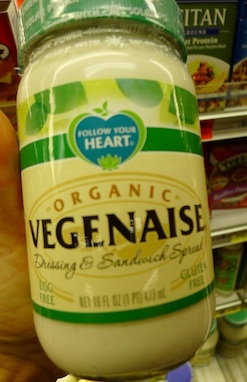
The only thing I would use is the glass jar, well cleaned of course
All information in this article is for educational purposes only.
It is not for the diagnosis, treatment, prescription or cure of any disease or health condition.
Here’s the problem with Vegenaise – it has hidden forms of MSG in disguise. “Oh, Jennifer…not again!” Well, I did say that I was sorry. What’s worse, Vegenaise recently got listed as “one of Ellen’s favorite things” on the Ellen Degeneres show. This makes me sick, because many people may try this product, not feel good and then think that a high raw food or vegan diet doesn’t work for them. They may go back to their old Standard American Diet (SAD) never to venture into the land of raw food and health again.
What is a “hidden form of MSG”?
Ok, here’s the deal. Food companies know that Monosodium Glutamate (MSG) is the best flavor enhancer there is; it is a food additive that adds A LOT of flavor to a product for little to no cost. BUT, savy consumers have caught on to MSG and most people know that it’s not a healthy additive because it can trigger migraine headaches, irritability, insomnia, rashes, hot flashes, dizziness, mood swings and even promote weight gain. A smart consumer like you will not buy a product containing MSG and the food companies know that. But they are already light years ahead of you! The food industry now uses new ingredients that contain what’s called factory created free glutamates. While one ingredient containing factory created free glutamates alone in a product may have a low concentrations of glutamate, using a combination of several ingredients together can add up to a considerable and dangerous amount of glutamate in one product, and in many cases you will actually find more glutamate than if the product had only contained MSG by itself! And that is why I called these ingredients MSG in disguise.
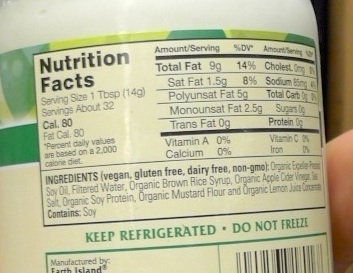
Never believe what you read on the front of a food product. Always read the list of ingredients before you decide to buy.
But keep reading. Do you see “brown rice syrup and soy protein?”
Not good. Not good at all! Actually I’m suspicious of the mustard flour too, I but can’t prove that one. (What is mustard flour anyway…shouldn’t it just read “mustard seed” or “ground whole mustard” if it is a natural ingredient?
Checking the list of hidden names for MSG, or monosodium glutamate, meaning ingredients that contain factory created free glutamates on msgmyth.com you will see:
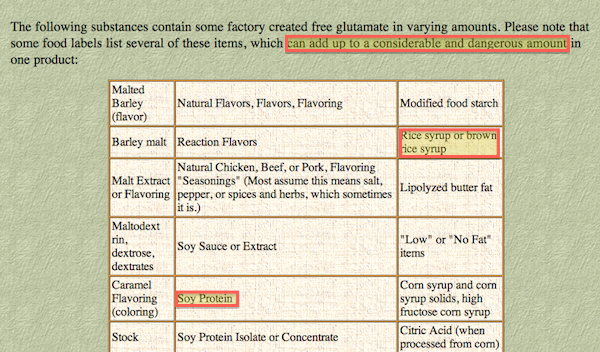
Hidden Names for MSG from msgmyth.com
As a raw foodist but more importantly as a person who eats only natural, whole and pure foods, I would not eat Vegenaise, knowingly. And the reason why I say that is because I’ve seen Vegenaise as an added ingredient in salad bars at health food stores in the USA (and also in Hong Kong). If you don’t look carefully, you could easily be eating a fresh, raw salad with all the organic bells and whistles and find yourself with a headache later, restless sleep through the night and a cranky irritable ‘snappy’ nature and maybe even a puffy face the next day. You might even find yourself itching your scalp, your eyes or your leg and meanwhile have no idea whatsoever that the cause of your discomfort was from that Vegenaise. Too many times, people swear to me that they only eat organic and they never eat MSG, Disodium Inosinate, Ribonucleotide, or Disodium Guanylate (which can be legally hidden in the other ingredients like “onion powder” or “natural flavors”).
Time to take the organic wool off the non-GMO eyes and understand what and how these chemical additives can affect you, your health and the health of your family.
My advice: Do NOT use Vegenaise. Ever. Check all salad bar ingredients before choosing to buy. If you don’t know or if it isn’t listed, ask. If the staff member seems unsure or can’t provide a clear, concise list of ingredients, then please don’t take the chance.
I have found high glutamate-content ingredients aka hidden MSG in 99.9% of the restaurants I’ve been to, and that includes vegan, gluten-free, non-GMO, organic and raw food restaurants.
Chefs are simply not educated to the level of hidden names for chemical food additives. I even had a certified raw food chef tell me recently that they were giving their newborn baby soy formula (something that is known and proven to have hidden MSG in the form of Organic Brown Rice Syrup, Organic Soy Protein Concentrate. Yes, you should be familiar with those offenders by now!). Giving high glutamate-content foods (even more concentrated in liquid form than in solid foods) to a newborn baby is a sure way to have many, many sleepless nights. If a certified raw food chef doesn’t know to avoid those for their own child, do you think they will know how to make a ‘safe’ salad by checking all ingredients on all sauces, dressings and spice mixtures? Do you think they will know what to ask the supplier?
Please don’t think you’re doing yourself a favor by choosing the soy-free version of Vegenaise. You will still find Brown Rice Syrup and Pea Protein, just as bad! It’s like choosing cocaine instead of crack….you won’t get any halo for that upgrade!
Their Horseradish Sauce: Brown Rice Syrup Pea Protein, Natural Flavor.
Tartar Sauce: Brown Rice Syrup, Pea Protein.
Roasted Garlic Vegenaise Gourmet: Brown Rice Syrup, Pea Protein, Natural Flavor.
Barbecue Vegenaise Gourmet: Seriously? Natural Smoke Flavor, Red Brown Rice Syrup, Spices, Natural Flavor, Pea Protein.
Chipotle Vegenaise Gourmet: Brown Rice Syrup, Pea Protein, Chipotle Powder, Natural Smoke Flavor, Natural Flavor, Paprika Extract.
Pesto Vegenaise Gourmet: Brown Rice Syrup, Pea Protein.
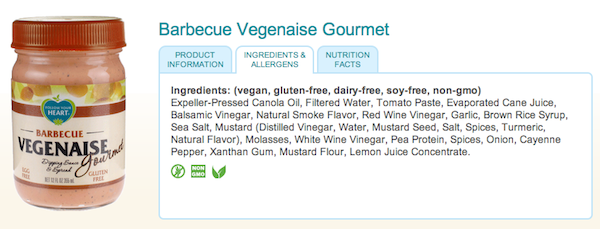
I couldn’t make this stuff up if I tried!
Are you starting to see a pattern here? Your body is an organic being and it’s sensitive to chemical derivatives and extracts. These ‘crack’ food additives add a lot of flavor to food making it additive, savory and yummy, but they also over-stimulate your brain. And your central nervous system. And that is not a good thing! High glutamate ingredients also over-stimulate your appetite, making your hungrier hours later and even into the next day. In lab studies, the common protocol to make a rat gain weight is to give it Monosodium Glutamate (MSG). Do you want to be a food industry rat? I certainly don’t!
You only use their salad dressings? Well, let’s check them out:
Vegan Honey Mustard: Brown Rice Syrup, Non-GMO Soy Protein, Natural Flavors, Spices. (I love how they put the Non-GMO…it’s like saying, ‘Hey, I have some crack to sell you…but don’t worry…it’s Non-GMO and organic!’)
Vegan Sesame Dijon: Brown Rice Syrup, Natural Flavors.
Vegan Thousand Island: Brown Rice Syrup, Non-GMO Soy Protein, Spices.
Organic Miso Ginger: Brown Rice Syrup, Non-GMO Soy Protein.
Spicey Southwestern Ranch: Brown Rice Syrup, Non-GMO Soy Protein, Brown Rice Syrup (again), Vegetable Enzyme, Vegetable Enzyme (again), Spices.
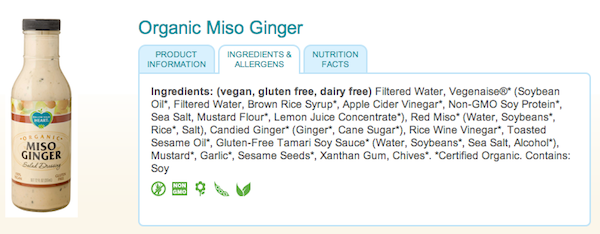
Make your own healthy version with:
Raw apple cider vinegar, shredded fresh raw ginger, fresh lemon, fresh garlic and water. Easy!
There’s something to be said for using all pure, natural whole ingredients and for feeding your body foods that boost your health and immune system. It’s not hard to make your own salad dressings and sauces at home, and actually it’s cheaper too. I don’t advocate the non-vegan version of these sauces either…they are full of the same added ingredients! What I advocate is REAL FOOD. A dressing made with fresh lemon, fresh garlic, cayenne pepper, cumin and fresh parsley, as an example. Isn’t it time to make the change, throw out these inferior foods and start giving your body what it deserves?
If you think you have reacted to a food which is either not labeled correctly or is label suspiciously, you have every right to contact the company by email and ask what’s in their food.
You can do this in every country in the world, even as an ex-pat living in a foreign country. I suggest that you word your email in this way:
“I recently ate your xyz product and x hours later I experienced the following reaction: (describe symptoms here). I have discussed this with my doctor and he/she has informed me that I need to know for medical reasons all of the ingredients that was in the food. Specifically, I need to know if you use MSG (Monosodium Glutamate), Ribonucleotide, Disodium Inosinate or Disodium Guanylate in any of the ingredients that you use to make your product. Also, I need to know how much factory created free glutamate is in the following ingredients (list suspicious ingredients like pea protein, yeast extract, malodextrin, soy protein, natural flavorings, etc here). Thank you and I appreciate you taking the time to respond to my inquiry.”
I do NOT suggest that you write any emails like this: “Jennifer said blah blah blah blah and Jennifer’s blog post says blah blah blah so what do you have to say about that?!” Please, be professional and courteous if you are writing an inquiry to a company. You have to ask the right questions to get the right answers. These companies have legal teams that know how to respond and get through hoops if you do not ask the right questions. My goal is that every product be required to label their total factory created glutamate concentration and any hidden ingredients or flavor enhancers so ultimately, you can make the best choice of food for you!







For more on how to start an additive-free diet diet, how to manage food allergies or what minerals you may specifically be deficient in, book a private health consult with me via Skype.
How to Book Your Health & Nutritional Coaching Session:
1. Take photos of your eyes with a digital camera.
2. Email the photos to me for approval.
3. We schedule a time to meet via phone or Skype!
More on Food Additives:
- Think your Mediterranean Green Olives are a ‘safe, clean’ food? Think again!
- Raw Food Diet for Detox and Cleansing – Success!
- MSG hidden in Packaged Foods: Why I don’t buy 90% of the ‘food’ at WholeFoods
- Knowing Botanical Food Families for Cross-Reactivity Allergies
- Detox Reaction vs. Allergic Reaction or Intolerance – Which one is it?
Jennifer Betesh
Latest posts by Jennifer Betesh (see all)
- What is an elimination diet? - 28 March, 2019
- Intermittent fasting – What’s the best way? - 15 March, 2019
- How do you know when it’s time to STOP fasting - 28 February, 2019
- When is the BEST time (and WORST time) to START a detox - 20 February, 2019




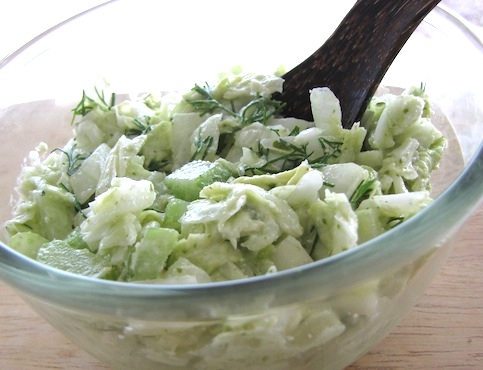


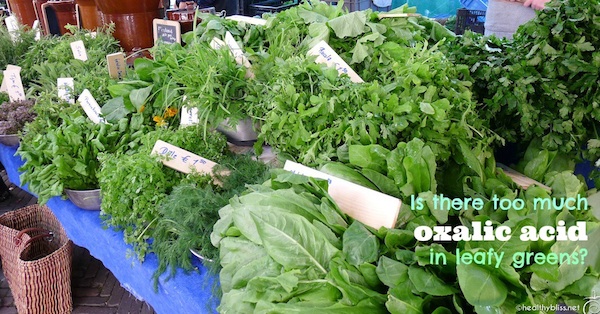
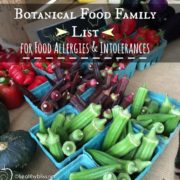


Jeez and I thought I was a food Nazi. I follow Dr. Esselstyn’s plan but even he will tell you he has a couple reese’s peanut butter cups every New Years Eve.
If you are consuming whole plant foods 99% of the time and you decide to treat yourself with a little Vegenaise on your kale sandwich, so be it. It’s not going to have any effect on your health.
I thought I was being helpful to my family and friends by sharing all the great things about my new found livelihood when I first switched to a plant based diet, read Dr. Esselstyn’s book, got to talk to him, saw my lipid numbers improve, etc, etc. BUT in reality it could and was being perceived as condescending. This not only made me look like a jackass it also completely turned off any interest.
Write your blog and post what you will. It’s a choice to read it or not and just leave it at that. I honestly skimmed it and then briefly read some of the comments. You essentially blast everyone that has a different opinion than you do with information that anyone can simply Google. It’s a simple Google search, plain and simple. That’s the power of the internet. The skill comes in when you can actually understand that information and see through what is correct and incorrect. That comes from an education.
The person from the company that makes the product took the time to post a very intelligent reply and you blast her with copy and paste information from the web.
Step down off your pedestal and get over your higher-than-you attitude.
Cheers!
Hi Chad,
When you suffer from food additive intolerances, unfortunately those little added extras on food labels can wreak havoc on your quality of life. I understand that you don’t suffer from any additive allergies so from your point of view, this is not an important issue, and that’s great for you, really! But this post is written for people who are eating foods like this, still feeling sick, and don’t understand why. For anyone who suffers from an intolerance to additives, I don’t need to explain or defend why I’m showing labels like this.
Thank you and I wish you all the very best!
Jennifer
There’s a sushi restaurant in NYC that uses vegenaise as a sauce for their vegetable sushi,( look em up at: BeyondSushiNYC.com). Its like glopping mayo on top of something that suppose to be healthier. Things that appear to be healthy is way more dangerous than things that are obviously unhealthy. So many people are deceived because they lie, and it is such a small business that no one investigates, but it’s soooooo messed up.
i have a crab dip recipe i need to make for an event, and it calls for mayo, but I and some others at this event have dairy allergies. I was thinking of using Veganaise as a sub but i’ve had my throat close up on me (same reaction i get with mayo) using this product. is there some sort of mayo sub i can use in this recipe instead that isn’t veganaise?
Hi Jennifer…In response to an earlier comment of yours regarding avoiding vegan milk alternatives (specifically almond milk), I avoid them too due to the ingredient carragean found in most commercial almond milks and have been making my own (not very well). I did find that Trader Joe’s has one almond milk product in the refrigerated section withouth the carragean additive so I’m thinking that would be a good choice. Do you have any thoughts on that? Or is there another reason of which I am unaware that is it still a no-no…
Hi Lesley,
A quick google search for the Trader Joe’s unsweetened vanilla almond milk shows 2 ingredients that would definitely make me avoid this product: xanthan gum and natural flavors – both of which can be high in glutamates and “natural flavors” can contain all kinds of other junk, legally, so I would say best to avoid. A much better option is to make your own organic almond milk at home. Here’s how: https://healthybliss.net/how-to-make-almond-milk-or-seed-milk-at-home/
To your health,
Jennifer
Hello,
Vegenaise: 90 calories with almost 9 grams of fat in one tablespoon. I must call this vegan junk food. Most friends whom I’ve mentioned this fact had no idea or ignored the reality. There is often a faulty assumption and trust that somehow the fat will not be a weight gain issue because of the organic and natural marketing position. Obesity is an issue just as important as any heart healthy gain that might be made with this product. Many natural food products are drenched in sugar, salt and fat. Organic sugar, sea salt and vegetable fat are still a health problem.
While I do 100% agree with your standpoint regarding processed vegan alternatives and food additives like MSG, carrageenan, etc (I avoid these things at all costs and personally eat a plant based vegan diet), I find it unfortunate that you’ve presented this information in such a militaristic manner. Being vegan is first and foremost an ethical choice, in my view. Being a healthy vegan is just as paramount to me but it isn’t the choice that many people are concerned with. If someone finds this lifestyle too difficult and reverts to the SAD, that is very unfortunate but reverting to eating animal products probably just shows their poor moral compass.
As one diagnosed with orthorexia and currently in treatment for anorexia nervosa-(food restriction & exercise bulimia), I can see that you struggle with the same things in regards to an obsession with health.
The best way to teach people about healthy eating is to simply set a good example and spread knowledge in as nonjudgmental of a fashion as possible- Not to throw their ignorance or misinformation in their face. Healthy eating does not have to be an all-or-nothing situation. It’s all in the eye of the beholder.
Best wishes,
Robin
Hi Robin,
Thanks for your feedback and for bringing up some great points! It’s true that many people like yourself do become vegan for ethical reasons. Many people also become vegan for health reasons too (Bill Clinton is an example of someone who became vegan after being diagnosed with a heart condition).
Other people also have to make changes to their diet because of food allergies and intolerances and due to food additive intolerances. As you pointed out, some people do have eating disorders too and this is yet another illness that can come into the picture. I think we need to be sensitive to all of these different paths and to people’s individual health history. I’m sorry if my style is too direct for you but believe me I have tremendous compassion for my clients and students. Simply said, I cannot please everyone all the time and it is not my intention to offend. I teach you what is in your food so you can make the best choices for yourself, no matter where you are on your journey!
To your health,
Jennifer
Here is a homemade mayo:
http://www.theppk.com/2013/07/homemade-grapeseed-mayonnaise/
Hi Jennifer,
Thanks for sharing all this info, I had no idea about this at all and am now sharing it with others. i wanted to source the website http://www.truthinlabeling.org/hiddensources.html as well, because I think it’s important for people to be able to read more if they have questions.
My question for you is, do you have any recipes for salad dressings etc. that don’t contain sesame? I have a food sensitivity or intolerance to sesame and would like to make a replacement for mayo, and something else to add to hummus other than tahini.
Thanks for your help!
Here’s a tip that might help fellow MSG allergy sufferers. I read this somewhere & has helped me out when I find myself awake at night, knowing I’ve eaten some MSG somewhere…
Dissolve 1/2 tsp baking soda in 1/2 glass of cold water & drink.
I’m usually back to sleep within 1/2 hr. Great tip to share!!!
Wow…Jennifer you are amazing! Thank you☺
Thanks for taking the time to reply.
Regarding the amount of glutamate in our products, although we have not measured the amount of glutamate in each of our ingredients, we do know that the amount of glutamic acid in our products is quite small. One serving of Original Vegenaise, for example, contains 0.0000002mg of glutamic acid. Again, glutamic acid is the amino acid found in proteins, different from free form glutamates, which have the potential to become MSG.
You’re right that many natural flavors contain hydrolyzed or autolyzed proteins that can be high in glutamates. The FDA specifies that hydrolyzed or autolyzed proteins should be named specifically in parentheses after “natural flavor” in the ingredient statement but many companies don’t follow this rule, possibly out of ignorance or possibly to disguise these unpopular ingredients.
The natural flavors we use in our products are plant-extracts, sometimes mixed in a base of sunflower oil or coconut oil. We are happy to share non-proprietary information about specific flavors if consumers have questions about them.
Everyone should choose the foods that make them feel the best and, of course, we support the choice of anyone who feels that Vegenaise is not a positive addition to his or her diet.
We understand why consumers are cautious, sometimes even fearful, about trusting the safety of the foods they eat, especially when many food manufacturers have not earned consumers’ trust. Here at Follow Your Heart, we take the quality and safety of our products seriously, and are very conscientious in choosing ingredients and developing recipes to offer healthy alternatives to traditional foods. Though our products may not work for everyone’s diet, we do want to make sure our consumers and potential consumers have the correct facts about our products and how they’re made. We are always open to learning, to feedback, and to questions, so don’t hesitate to contact me directly for more information.
Hi Sheena,
Thank you again for your reply and explanation for the readers. I would just like to point out the important piece of information for anyone sensitive to factory created glutamates and that is “we have not measured the amount of glutamate in each of our ingredients.” So, as a consumer, I am still unsure what the glutamate count is in this food and I am thinking that the glutamate is the factory created glutamate that is created by making the extracts that make up these ingredients (but it is unclear from your message, at least from my point of view).
Just so the readers understand a bit more, there is a difference between factory created glutamate and free form glutamates and glutamic acid. Here is a breakdown from http://www.truthinlabeling.org/AboutUs_TheOrganization.htm and some other info too:
“At present, the FDA requires the disclosure of ingredients labeled “monosodium glutamate” and “hydrolyzed…protein” when, as ingredients, they are used in a “flavor” or “flavoring” (whether or not the “flavor” or “flavoring” is preceded by the words “natural” or “artificial”). However, “flavors” and “flavorings” can contain MSG in ingredients other than “monosodium glutamate” and “hydrolyzed…Protein” without the MSG being disclosed.
About “organic” products…
Where MSG is concerned, “organic” doesn’t mean “safe”. Ingredients like organic autolyzed yeast and organic natural flavoring have just as much processed (manufactured) free glutamic acid (MSG) in them as those not called “organic.” Following are products labeled “organic” that have come to our attention as containing processed free glutamic acid (MSG). There are others.
Product: Vegetable Bouillon
By: Morga
Ingredients include: Yeast extract; Maltodextrin
Product: macaroni & cheese dinner
By: Simply Organic
Ingredients include: Natural flavors; Autolyzed yeast extract
The truth of the matter is that the glutamic acid found in unprocessed, unadulterated, and/or unfermented food and in the human body is composed of one form of a single amino acid, L-glutamic acid, and nothing more. In contrast, the glutamic acid that is freed from protein through a manufacturing process or through fermentation (i.e., processed free glutamic acid), is always accompanied by a variety of impurities — i.e., byproducts of manufacture. Thus, the glutamic acid that is used as a flavor enhancer in processed food is always composed of L-glutamic acid and impurities that inevitably appear during fermentation or other modes of glutamic acid manufacture or processing. In addition to the inevitable production of D-glutamic acid, impurities may include, but are not limited to, pyroglutamic acid, mono and dichloro propanols, and heterocyclic amines. Mono and dichloro propanols and heterocyclic amines are carcinogenic. The consequences of the interactions of these various chemicals with other chemicals and/or with the digestive processes are unknown.
Make no mistake. Since processed free glutamic acid (MSG) used in processed food and in plant “growth enhancers” is not identical to glutamic acid found in unprocessed, unadulterated food and in the human body, there is no reason to believe that the product called “glutamic acid” by the glutamate industry will be functionally equivalent to pure L-glutamic acid. There is no reason to believe that their excitotoxic effects will be identical.
Deceptive, also, is the often repeated excuse that both processed free glutamic acid (MSG) itself, and the components of processed free glutamic acid (MSG) are “naturally occurring.” By FDA definition, any ingredient or constituent of an ingredient that comes from a plant or animal source is “naturally occurring.” Thus, arsenic and hydrochloric acid are both naturally occurring. You will not, however, find them used as food ingredients. Similarly, hydrochloric acid in the human body is essential to normal body function. We don’t, however, ingest hydrochloric acid.
Then there is the claim that “just a little won’t hurt anyone.” Yet, in truth, a little arsenic will, over time, harm people. The peanut residue left on a knife that had been wiped “clean” with a paper towel was enough to kill a child who was allergic to peanuts. The corn starch or maltodextrin used as binders and fillers in some vitamins, minerals, and medications will cause MSG reactions in acutely MSG-sensitive people. Indeed, no study to determine the least amount of processed free glutamic acid (MSG) needed to trigger an MSG reaction in MSG-sensitive people has ever been done.
Again. Any small amounts of free glutamic acid that might be found in unprocessed, unadulterated, and/or unfermented, food will be L-glutamic acid, only, and will not typically cause adverse reactions in MSG-sensitive people. This should not be confused with the glutamic acid that occurs in or on food as a consequence of manufacture or fermentation, which typically causes adverse reactions in MSG-sensitive people providing that they ingest amounts that exceed their tolerances for MSG. The fact that there may be some unadulterated, unfermented free glutamic acid in processed food or in produce is irrelevant to the fact that processed free glutamic acid (MSG) causes adverse reactions in MSG-sensitive people.
GLUTAMIC ACID (often referred to as glutamate) is an amino acid found in all protein. Following ingestion of protein, and during the course of normal digestion, glutamic acid is released from ingested protein, becoming “free glutamic acid.” If sufficient amounts of free glutamic acid are not available for normal body function, the body can create glutamic acid from other amino acids. Humans do not need to eat glutamic acid or eat protein that contains glutamic acid in order to supply the body with the glutamic acid that it needs. For that reason, glutamic acid is referred to as a “non essential” amino acid.
Because humans do not need to eat glutamic acid in order to supply the body with the glutamic acid that it needs, glutamic acid is called a “nonessential” amino acid.
Glutamic acid can also be freed from protein by fermentation, enzymolysis, use of acids, or other manufacturing processes, prior to ingestion.
FREE GLUTAMIC ACID is glutamic acid that has been released from protein. Just as humans have two hands, glutamic acid has two enantiomers (chemically identical molecules with the L-enantiomer being the mirror image of the D-enantiomer). Just like most other alpha-amino acids, glutamic acid contains a stereogenic center and exists as the L- and D-enantiomers.
“The word chiral, from the Greek word for hand, alludes to molecules that exist in mirror-image versions — right-handed or left-handed. Although they appear to be identical twins, chiral molecules are fundamentally different. One molecular twin cannot be substituted for the other because they are asymmetrical. The difference is comparable to asymmetry between your right and left hand: One is a mirror image of the other, but you cannot fit your right hand into a left-hand glove.”(1)
“Although it has been generally accepted that the free amino acids and proteins found in higher organisms are composed exclusively of the L-enantiomers of amino acids, the mirror image D-forms are know to be present in some naturally occurring peptide antibiotics and in the cell walls of bacteria.” (2)
NATURAL FREE GLUTAMIC ACID is glutamic acid that has been freed from ingested protein during digestion, or glutamic acid that has been transaminated (created) from other amino acids. It is also possible that there are some minute amounts of natural free glutamic acid associated with some intact, unadulterated, unprocessed, unfermented protein. NATURAL FREE GLUTAMIC ACID found in higher organisms is made of L-glutamic acid only. “Natural food protein, as well as protein in the human body, contains only L-forms of amino acids.” (3)
“Unlike amino acids derived from natural protein, which possess only the structure (S)-12, synthetic amino acids are composed of equal mixtures of (S)-12 and (R)-12.” (4) Note: In this paper, (S)-12 refers to the L-amino acids and (R)-12 refers to the D-amino acids.
“There were contrasting views expressed on the use of the various isometric forms (the natural L-form or the commercially available mixtures of DL-forms) of amino acids.” (5)
“The chemical structure of L-glutamic acid and related compounds and the chemical composition of MSG are represented in Figure 1….Two possible stereoisomeric forms of glutamic acid exist, D and L. According to Maga (1983) the L form (dextrorotary form with the L-configuration) is the predominant natural form….” (6) (7)
“Because D-amino acids are rare in higher animals…” (8)
MANUFACTURED FREE GLUTAMIC ACID (MSG) is glutamic acid that has been freed from protein through a manufacturing process or fermentation prior to ingestion, or glutamic acid that has been grown from selected bacteria that secrete glutamic acid through their cell walls. There are over 40 ingredients in which MSG will be found. “Monosodium glutamate,” “autolyzed yeast,” and “natural flavoring” are names of some of those ingredients. (In the first FDA classification of such ingredients, the FDA called them “monosodium glutamate and other hydrolyzed proteins.”) The amount of free glutamic acid (MSG) that will be found in each is dependent on the method used to produce it, the protein source used (if bacterial fermentation was not used), and the extent of the processing.
MANUFACTURED FREE GLUTAMIC ACID is made up of L-glutamic acid and D-glutamic acid, and may bring with it pyroglutamic acid, mono and dichloro propanols (which are carcinogenic), heterocyclic amines (which are carcinogenic), and other unwanted byproducts (impurities).
“Foods contain a large assortment of xenobiotics (foreign, unnatural substances) that can have both positive and negative nutritional implications. One example is the occurrence of the uncommon D-stereoisomers of amino acids in some dietary proteins. These D-amino acids are produced from the common L-stereoisomers during food preparation and processing.” (9)
In table 1 of a research report by Rundlett and Armstrong, the authors present a list of all of the processed foods analyzed by them for L and D-glutamate (glutamic acid) content. Every one of the 38 processed foods evaluated contained D-glutamate. Three of those analyzed and found to have D-glutamate content were three brands of monosodium glutamate, including Ac’cent Flavor Enhancer, once marketed by Pet Incorporated. (10)
“Hydrolysis of proteins in 6 N HCl at 110 degrees centigrade for 24 h inevitably causes racemization of amino acids….Even under milder conditions of hydrolysis using lower temperatures and shorter exposure time, racemization of amino acids occurs.” (11)”Savory ingredients like hydrolyzed vegetable protein… have…been produced by….extreme conditions….[that] promote a variety of chemical reactions, thus a range of unwanted by-products are produced as well.” (12)
“The chemical hydrolysis with hydrochloric acid is efficient, but almost any organic substance in the raw material is hydrolyzed, resulting in desired reactions such as hydrolysis of proteins, carbohydrates, fats (triglycerides), and the unwanted formation of mono and dichloro propanols (MCP and DCP).” (12)
“Pyroglutamic acid…occurs as a breakdown product of glutamate that can accumulate in foods during storage and processing.” (13)
“I have been asked to give testimony on the chemical nature of glutamates in food. The parent compound in the glutamate family is glutamic acid, an amino acid and normal component of the human body….Glutamic acid exists in two forms: (L)-glutamic acid and (D)-glutamic acid. The L and D designations indicate different spatial arrangements of the atoms of the two forms. (D)- and (L)- glutamic acid molecules are mirror images, relating to each other in the same way as a glove for the right hand relates to its mate for the left hand. Just as certain properties of the left-hand glove differ from those of the right-hand glove (e.g., the left-hand glove cannot be worn on the right hand, and vice versa), so (L)-glutamic acid and (D)-glutamic acid differ from each other in certain other properties. For example, in the body, (D)-glutamic acid is not broken down (metabolized) in the same way as the (L) form because the enzymes that recognize and work on the (L) form do not recognize, and, therefore, ‘ignore,’ the (D) form. Nearly all naturally occurring glutamic acid is in the (L) form.” (14)
REFERENCES
1. Bruce V. Bigelow, staff writer, San Diego Union-Tribune. October 4, 1995. (Source K. Barry Sharpless)
2. Rundlett, K.L. and Armstrong, D.W.. Evaluation of free D-glutamate in processed foods. Chirality. 1994;6:277-282.
3. Hunter, B.T. The Great Nutrition Robbery. New York, NY: Charles Scribner’s Sons, 1978, page 135.
4. Cram, D.J. and Cram, J.M. Host-Guest Chemistry: Complexes between organic compounds simulate the substrate selectivity of enzymes. Science. 1974;183:803-809.
5. Federal Register. Vol 38, No. 143–Thursday, July 26, 1973, page 20037
6. Maga, J.A.. Flavor potentiators. Critical Rev. Food Sci. Nutr. 1983;18:231-312.
7. Life Sciences Research Office of the Federation of American Societies for Experimental Biology. Analysis of adverse reactions to monosodium glutamate (MSG). July, 1995. Prepared for the Center for Food Safety and Applied Nutrition, Food and Drug Administration. Page 9.
8. Konno, R. et al. Origin of D-alanine present in urine of mutant mice lacking D-amino-acid oxidase activity. American Journal of Physiology, 1993, 265:G699-703.
9. Man, E.H. and Bada, J.L. Dietary D-Amino Acids. Ann. Rev. Nutr. 1987;7:209-25.
10. Rundlett, K.L. and Armstrong, D.W. Evaluation of free D-glutamate in processed foods. Chirality. 1994;6:277-282.
11. Konno, R. et al. Origin of D-alanine present in urine of mutant mice lacking D-amino-acid oxidase activity. American Journal of Physiology, 1993, 265:G699-703.
12. Pommer, K. (Novo Nordisk BioChem Inc., Franklinton, NC) Cereal Foods World. October, 1995 Vol 40. No 10. Page 745.
13. Life Sciences Research Office of the Federation of American Societies for Experimental Biology. Analysis of adverse reactions to monosodium glutamate (MSG). July, 1995. Prepared for the Center for Food Safety and Applied Nutrition, Food and Drug Administration. Page 31.
14. Expert Report of Paul M. Kuznesof, Ph.D., Chief of the Chemistry Review Branch in the Division of Product Manufacture and Use, Office of Premarket Approval, Center for Food Safety and Applied Nutrition, FDA. The Report was submitted on September 3, 1996 to the Federal Court in the Eastern District of Missouri re: Truth in Labeling Campaign, et al., vs. Shalala et al., pages 1-3. ”
Read more at this link: http://www.truthinlabeling.org/manufac.html
Thank you and I hope the readers can make the best choice for themselves!
Thanks, Jennifer, for the invitation to comment on your blog post. I’m the Quality Assurance Manager at Earth Island, the manufacturer of Vegenaise and all Follow Your Heart brand products. Several of our customers have contacted us about your blog post “What’s Wrong with Vegenaise,” asking us for more information about MSG in our products, so we wanted to comment directly on this post to answer some of the questions raised and offer an open line of communication if you have any other questions about our products or ingredients.
We share your concern with the healthfulness of foods available on the market and understand your skepticism of food manufacturer’s transparency. We can assure you, however, that we never try to mislead consumers about our ingredients and are always willing to share information about our ingredients and how they’re processed with consumers. In addition, we have strict standards for the quality and wholesomeness of the ingredients we choose and thoroughly research our ingredients, both before our decision to use them, as well as after, as new information becomes available, to make sure they are ingredients we still choose to use in our products. We want those who read your blog to have an accurate understanding of our products and of the high priority we place on truthfulness in labeling.
We take the quality and safety of our products very seriously and don’t use MSG or MSG-derivatives in any of our products, nor are our ingredients hidden forms of MSG.
Conscientious consumers are right to be attentive to soy protein as an ingredient because many food manufacturers use “hydrolyzed soy protein” or “hydrolyzed vegetable protein” in their products and, though the FDA requires that hydrolyzed protein be labeled as such, some companies neglect to do so. In these cases–when “hydrolyzed soy protein” is incorrectly labeled as “soy protein”–it would be accurate to say that soy protein is a hidden source of MSG. Similarly, many natural flavors contain hydrolyzed ingredients, which should be declared on the label, but if a company doesn’t follow FDA labeling laws and doesn’t declare the hydrolyzation of a natural flavor’s sub ingredient, then that natural flavor could be seen as a likely source of free glutamates.
MSG–a glutamate–is a free form of glutamic acid, an amino acid. Glutamates are free form, while glutamic acid is the natural bound protein form. Protein in foods contain amino acids, including glutamic acid, bound in amino acid chains. Any food ingredient that contains protein can be a source of free glutamates, but how the food ingredient is processed will determine if the ingredient contains any free glutamates or free glutamates at high enough levels to create detectable MSG.
In order for the glutamic acid to turn into free form glutamates, the protein in the food needs to be broken down into its component amino acids. In other words, when the glutamic acid is separated from its host protein, free glutamates are created. Typically, the protein is broken down through hydrolyzation, which essentially “digests” the protein into its component amino acids and can create free glutamates at high levels (sometimes 5-20%). This is when MSG can be created and why hydrolyzed protein can accurately be called a potential source of hidden MSG.
To be clear, the soy protein, pea protein, natural flavor, and brown rice syrup we use in Vegenaise and in our salad dressings do not contain any hydrolyzed ingredients or sub-ingredients. Regarding the mustard flour in our products, it is simply ground mustard seeds.
We appreciate you taking the time to read our response and if you have any questions about our products or ingredients, please contact me directly at sheena@followyourheart.com.
Thank you,
Sheena DeBellis
Hi Sheena,
Thanks for taking the time to share your information with the readers. Hopefully after seeing what technical processes we are talking about, people will quickly see that these ingredients are manufactured in laboratories, and neither natural nor whole foods. Right there, an easy choice can be made.
After that, here are my comments:
1. We still do not know the glutamate amount of each individual ingredient.
2. I’ve had many vegan, vegetarian and raw food clients eating this product (with no other food allergies) and presented with rashes, insomnia, migraines and hot flashes – when we took this product out of their diet, all symptoms disappeared.
3. The ingredient “natural flavors” is still a complete mystery ingredient and I’m not sure how there can be no sub-ingredients, since, respectfully speaking, last time I checked, “natural flavors” don’t grow on trees. According to the Code of Federal Regulations CFR Title 21:
“The term natural flavor or natural flavoring means the essential oil, oleoresin, essence or extractive, protein hydrolysate, distillate, or any product of roasting, heating or enzymolysis, which contains the flavoring constituents derived from a spice, fruit or fruit juice, vegetable or vegetable juice, edible yeast, herb, bark, bud, root, leaf or similar plant material, meat, seafood, poultry, eggs, dairy products, or fermentation products thereof, whose significant function in food is flavoring rather than nutritional. Natural flavors include the natural essence or extractives obtained from plants listed in 182.10, 182.20, 182.40, and 182.50 and part 184 of this chapter, and the substances listed in 172.510 of this chapter.”
Keywords that should have you running to the hills every time you see this on a food label: “extractive, protein hydrolysate, distillate, or any product of enzymolysis” (and of course, in general for vegans to avoid this on other products because it can contain meat, seafood, poultry, eggs or dairy products.)
4. Perhaps Michael Pollan (author of Food Rules) says it best:
“Don’t eat anything your great-grandmother wouldn’t recognize as food.”
and
“If it came from a plant, eat it; if it was made in a plant, don’t. ”
and
“It’s not food if it’s called by the same name in every language (think Big Mac, Cheetos, or Pringles).”
5. Large companies are now starting to change their ingredients as a direct result of bloggers and the power to spread information through the internet . A recent article in the Huffington Post entitled As Food Labels Get Closer Look, Ingredients Vanish stated:
“As Americans pay closer attention to what they eat, food and beverage companies are learning that funny sounding ingredients can invite criticism from online petitions and bloggers. The risk of damaging publicity has proven serious enough that some manufacturers have reformulated top-selling products to remove mysterious, unpronounceable components that could draw suspicion.” (see Huff Post article)
6. Are we seeing more dis-eases related to high glutamate concentrations in people? You bet! John Hopkins University published a study last year showing the direct link between glutamates and Restless Leg Syndrome and insomnia saying they “used MRI to image the brain and found glutamate — a neurotransmitter involved in arousal — in abnormally high levels in people with RLS.” (see Johns Hopkins article)
Hmmm, I wonder why people have high levels of glutamate in the brain and why RLS is one of those new strange mystery diseases? Related to these glutamate ingredients popping up everywhere in our food supply, perhaps?
Don’t’ you have the right as a consumer and a responsible member of your family to know what’s really in your food?
And just remember if you are still unsure: “when in doubt, leave it out!”
I enjoyed the article, would you happen to know a good salad dressing that excludes garlic and onion? I’ve been a vegetarian for over 3 years and am currently working towards veganism but have also decided to try removing most oils permanently, and also remove garlic and onion experimentally. Which is tough because since I became a vegetarian garlic has been my go to thing to make things taste great. Have you done much research into the claims of garlic and onion being unhealthy. It seems to be a bit more aimed at spirituality though I did recently read that garlic has sulphone hydroxyl ions that penetrate the blood-brain barrier. Now I’m very doubtful of the claims against it but at the same time doing some research I realized I won’t expand my palate much unless forced by need of lacking flavor. Also in one of your posts you talk about not buying almond or soy milk. I was wondering what your position is on coconut milk.
Hi Alex,
There’s definitely an “onion and garlic” camp and a “no onion and garlic” camp in the health world, especially when you start to look at Ayurvedic medicine. Ultimately, I think it’s a personal choice. I can say that in 16 years of working in this field, I never found one client who was not achieving their health goals because of onion or garlic. But, definitely foods like wheat, dairy, refined sugar, coffee, alcohol and processed foods can hold people back. Foods that are naturally high in sulfur (like onion, garlic, cabbage, and durian) are actually extremely efficient and fast detox finds. No matter what you choose, be sure that it feels right for you.
If you’re looking for a salad dressing with no onion or garlic, just use fresh lemon! Add some tahini (sesame seed paste). I use lemon all the time and I think it tastes amazing! Here is a recipe for tahini dressing (and of course you can exclude the garlic): https://healthybliss.net/vitamix-recipe-tahini-garlic-and-lemon-salad-dressing-or-veggie-dip-and-its-amazing/
As for coconut milk and almond milk, I think it’s important to stay away from the store-bought vegan milks. This is why: http://greensmoothiepower.com/green-smoothie/why-i-dont-add-almond-milk-soy-milk-or-coconut-water-to-green-smoothies/
Thanks and good luck!
Blessings,
Jennifer
I think what you’re doing is fantastic. When I read your article, I in no way saw it as women-bashing or even extreme. At one point, people used to think raw foodists and vegans were extreme. So it’s going to take a little longer for the Non-GMO and Anti-MSG movement to gain the legitimate attention they need. It may have helped that I already did my research and know that MSG is just one form of glutamate that we need to watch out for. People don’t realize that it can be formed as a by-product, like it does in Bragg’s Soy Aminos (which I stopped buying as soon I found out about 5 yrs ago).
Vegans who aren’t aware will fight tooth & nail to keep their “binky”. Think of vegans that hear their replacement foods are bad in the same way that a meat-eater is told that their carnivorous lifestyle is bad. Vegans are even more sensitive! There are many of us who identify ourselves to our label, whether it be an omnivore or herbivore. And not just the eating lifestyle, but also the labels of religion, race, gender, class, etc. When humans are attached to their assigned label, they become very protective when the customs that come with that label are challenged. Labels create the foundation of a person’s personality. When you attempt to knock out that foundation from under them, they begin to crumble and what follows is similar to an identity crisis.
So you can imagine why religions will forever debate each other, why opposing politics will forever go to war, why racism & sexism will continue to exist, and why any challenge towards a person will create defensiveness. I try not to define myself too often, in order to allow myself some spiritual freedom. But in a world where labels are so culturally integrated for survival, I do at times represent myself accordingly–but I remain emotionally unattached to my labels. So far, it’s hard to offend me, let alone to discriminate against me whether it be my gender, height, weight, skin color, eating habits, whatever.
People who react defensively haven’t been able to detach in this way, so it’s great that you haven’t fell into the trap of an emotionally defensive argument. Rather, you explained yourself using logic and clarification. The way you handle yourself shows that you are exceptionally, emotionally intelligent. I see you more as an educator, rather than a preacher. The difference is that an educator will give data as the basis of an argument, versus a preacher that uses dogma. Kudos to you 🙂
Hi Jennifer.
I have been trying to go sugar free for awhile now and one of the few sweeteners I use is organic brown rice malt. There is no other ingredient in the product apart from organic brown rice. I am interested in your comment…
“For those that are interested in understanding more, brown rice syrup can be highly concentrated in glutamates”
What are glutamates and why is it is bad to have them? How is it different from eating brown rice?
Jennifer,
Great job with this article! As an analytical chemist even I still have difficulty with fraudulent, deceptive labels. Non-GMO, gluten-free, dairy-free, “all natural” (LOL!), “Certified Organic”…Lies, lies and more lies! I can only imagine what hell regular people go through trying to find uncontaminated food, water and air to breathe! Who does one trust in a corporate-dominated world of abject greed and corruption? Unless you have a full-scale analytical lab to test ALL foods, you’ll need to let your body be your guide – it will never let you down. It’s truly a full-time job to remain healthy in our present world (I’ll soon write a book on same.). Sorry, if all this seems pessimistic – I just accept it as another worthwhile challenge to enlighten caring people without violating their free-will choices. That’s why what you do, Jennifer, is extremely valuable to humanity – even to those (as myself) who aren’t 100% vegan. BTW, did you pick up on the amusing, sarcastic intent of one “Monica Santo” (Monsanto) comments on 11/3/13?
What’s wrong with pea protein? I’ve been moving toward a vegan diet and use a rice/pea protein powder in my smoothies.
Hey Jennifer, awesome blog! I have been vegan now for 10 months and my health just keeps getting better and better. Except for one thing but I think I managed to figure out what it is. I have breakouts of scalp ringworm sometimes, I eat about 98% organic, but I noticed when I cut out oils my ringworm seems to stay away. I am very very on top of the natural flavor labels and other preservatives. I did eat veganaise still though until today, so I am glad I found your website. I have actually replaced veganaise with avocado or homemade hummus, or even lemon juice with Himalayan pink salt and pepper. But was thinking of getting some Veganaise before this so glad I saw this. I will try that Tahini dressing you mentioned above too.
I think the other issues here are the fact that sharing personal information in a public forum in a way to make someone look bad is not exactly acting in a spirit of love. Raw food is my hobby, not my life, and when faced with an emergency situation, I did what was necessary to sustain my child until another option could be worked out. To insinuate that I cannot make a proper salad because I needed to feed my child formula in an emergency situation which was not planned for, is completely out-of-bounds, in my opinion. How would me giving my child soy formula for less than two weeks translate into me serving non-raw, additive-filled food to people who are asking me for raw food? Until you have become a mother and know what is is like to be judged in public for your choices, some of which are often spur-of-the-moment, unfortunately (as motherhood is full of unexpected ups and downs), I do not think you are justified in being critical, especially of people you do not really know, and who are not your clients. Yes, this was taken as woman-bashing and mother-shaming, and by many people, not just myself.
Hi Jennifer,
I’m very sorry to hear that you think I am a “mother-shaming woman-basher.” It is not my intention at all, and I encourage you to take a step back, have a deep breath and try to take in a bigger picture. I personally know over 200 raw food chefs and I’m in social media contact with hundreds more than that. In my article, I did not reveal any personal information on the identify of the chef, what country she lives in or even the sex or her child. I don’t think I violated any personal information at all. I’ve worked with well over 4,000 clients one-on-one and I am answering hundreds of emails about intense personal health concerns every week. I never reveal the identity of any of my clients or people who contact me by email, comment, or PM. (I’ve seen many famous clients, and I have never revealed their names either.) In fact, most people comment that I take confidentiality to an extreme.
If you suffer from food additive allergies, you need to know that you cannot trust food made from a raw food chef or any chef in any restaurant even if the restaurant claims to be MSG free, and my example given highlights just one reason why. I’m so happy that you found raw food as a hobby, but if you or your child suffers from food additive intolerances, it can become a life or death situation, and I am not exaggerating. Look at Robyn O’Brien (author of Unhealthy Truth). Her child turned blue in front of her very eyes after eating cereal and yogurt. Robyn explained that once she learned what was really in her food, she could not unlearn it, even if she wanted to. She has now dedicated her life to educating people on the level of food additives, food allergies and GMOs and how they can trigger food allergies and food intolerances. I also feel that I cannot unlearn what I know. It’s not an easy job believe me, but isn’t it our job as food educators to teach people what’s really going on here?
As a sufferer of extreme food additive intolerances, I can tell you that I wish raw food was simply a hobby for me! But it’s a far more serious choice with serious consequences if I make a mistake. Does it make me angry that I’ve gotten sick at more than 90% of the raw food restaurants around the world because there were chemical ingredients or chemical-laced salt used in the food (made by qualified raw food chefs)? You better believe it does! Do I feel frustrated when I work with mothers and newborn babies who are covered in rashes, cannot sleep, have autism, learning disabilities, depression or anxiety and they are unknowingly eating foods that are triggering these reactions? It’s an undeniable YES! I lose sleep over the pain that these mothers endure, how it affects their health, their baby’s health and even the state of their marriage. My work is even harder when I have to convince them that soy formula with MSG is increasing the baby’s intolerance to peanuts and other proteins and also disrupting their sleep patterns, or that their miso powder, wasabi powder, tofu burger, vegan butter, or vegenaise is making them sick. Is it harder to teach them this stuff when they see raw food chefs eating tofu burgers or drinking soy milk and therefore think that those foods much be “safe”? Yes, it makes the message confusing for them for sure!
I saw a pregnant mother at 36 weeks COVERED from head to toe in a rash. It was so bad that she had to wear BANDAGES on her legs. I begged her to just be open to what I had to say. She was mostly vegan and by all means eating a very healthy diet, at least in her mind. So why a rash? She was reacting to ribonucleotides and other flavor enhancers in her food. Did she want to have a rash or put her child in danger of being born in a weakened immune state? No way! But she had no idea what to do. By the grace of God, she changed her diet by removing and replacing certain foods, and became 100% RASH FREE within 3 WEEKS, managing to give birth with no rash at all. I saw another mother that because of complications at birth, had to give her baby hospital formula for just 2 DAYS, and the MSG in that formula was enough to trigger an immune system reaction and make the baby completely intolerant to any MSG that she was ingesting and transferring through her milk. Her baby was COVERED in a rash for 2 YEARS and did have 1 full night of sleep ever. They went to the top pediatric experts in 3 different countries before they found me. The mother told me, “My instinct is that it’s something in the food but the doctors keep telling me it can’t be that.” In just a FEW DAYS of changing her diet, the baby slept a solid night through for the first time in the baby’s LIFE. Less than 1 month later, the baby’s rash was 100% GONE. Those parents still occasionally email me just to say “THANK YOU – one hour with you changed our lives forever.”
I certainly hope that no one thinks I am sharing too much personal information there, but I am really trying to make a point. Am I really a “mother-shaming woman basher” to want to help mothers know the truth? Please, understand that I have more compassion for someone suffering from food allergies than you could ever possible know. I lost 2 YEARS of my life from being sick. I don’t want anyone to have to go what I went through. I wish that someone had told me what was going on in my food back then; I would have gladly listened! Unfortunately, due to such a lack of real information out there, we’re all walking through a minefield with our food…for us and our children. The more we can help to educate each other, the better we can navigate through it. I understand that I am not a mother, but as you can see, I am also judged in public for my choices too. So, we are really not different at all! I’m on your team Jennifer, and I hope you’re on my team too!
Blessings to your health,
Jennifer
I understand this blog post was meant to educate people on the hidden ingredients in vegan food, however your means to do so threw me off guard. I am always taken back by women who choose to bash other women when it comes to how they choose to supply their children with adequate nutrition. If we want to start talking about toxic energy within people, we should look at even the people who choose to get a message across by belittling others. I have been a mother who struggled with breastfeeding and it is terribly frightening when you come to realize your child isn’t getting enough nutrition. Maybe take that into consideration before you decide to use that as an example.
Hi Brandi,
I can assure you that I was not woman bashing in my article (what’s being said to me in comments is another story lol…but that’s ok!). My point is that people are uneducated about additives, and those people include chefs and raw food chefs too. That means you as a consumer need to question what you are eating, in salad bars and raw food restaurants as much as in regular restaurants and supermarkets. I understand that what I am saying is hard to hear, and I am sorry for that.
There are many good homemade formulas for babies that I have advised countless clients/mothers in making. I also advise to every single one of my pregnant clients to make a back-up plan for having a homemade baby formula in place before they even give birth, because in the first few days of life, if the baby does not accept milk or if there is any other problem (which can of course happen and it’s no one’s fault), you need to have a plan in place. Believe me, I am very aware of the need to get enough nutrition to a newborn infant and mother, and that is exactly why I take the time to teach my clients how to take care of these issues. I offer formula recipes that are both vegan and non-vegan so each mother can decide what is best for her, without any guilt, judgement or blame.
Thank you and many blessings to your health!
Jennifer
Any recipes for a tasty vegan mayo? Thanks
Hi Chris,
Try this one, it’s even better than mayo, and it’s vegan: Recipe: Raw Tahini, Garlic and Lemon Salad Dressing or Veggie Dip…and it’s Amazing!
Enjoy!
To your health,
Jennifer
I went vegan for my health and as part of that I cut back on processed foods…nearly eliminating them all (still eat pasta, etc). Most everything else I make from as close to scratch as I can. I started making my own almond milk after discovering that carrageenan is in A LOT of commercial non-dairy milk. Tried to do a search but didn’t see if you had addressed carrageenan.
Hi Tanya,
You raised a very good point. Carrageenan is another additive on my “do not eat” list. I wrote an article about it here: Why I don’t add Almond Milk, Soy Milk or Coconut Water to Green Smoothies Making from from scratch is the way to go, keep up the good work!
Jennifer
What moronic idea is it that Organic Brown Rice syrup is MSG?? I have a jar of it. Learn actual chemistry before you go talking about things you clearly just got off the Internet.
Clover, I’m constantly amazed at how disrespectful, antagonist and downright rude people can be in tapping their anonymous remarks on the internet, and your comment is yet another perfect example. Once again, I am shown that not only are people’s physical bodies toxic, but their minds and spirits are contaminated too. If you would like to disagree with me, that’s more than okay, but please do so in a respectful way. We can have a disagreement and still show compassion to each other as human beings. I’ve spent hundreds of hours creating a well-researched website that is totally accessible for free. You are most welcome to not like it and keep browsing! For those that are interested in understanding more, brown rice syrup can be highly concentrated in glutamates, and when combined with other high glutamate ingredients, can add up to having an even higher glutamate content than adding just MSG alone. Sadly, the food industry knows the chemistry and science behind this very well, and that’s exactly why they combine certain ingredients in food.
With a name like MONica SANTO (Monsanto) No wonder Monica feels threatened by the truth you teach Jennifer. Food chemicals are neurotoxins and tend to make people nasty. she could do with one of your green juice cleanses!
Thanks for demonstrating that food-obsessed dingbats should have spent more time in biology and chemistry classes in high school, and less time getting high and sharing their ignorant and stupid thoughts with each other.
Haha, that is really funny! All I can say is wow…the power of the internet definitely brings out all types! If I’m “food obsessed” then so be it…it’s an honorable title to be concerned about the health of people in this world and to be educating people about the toxic chemicals hidden in their food. Someday, you are going to thank me!
is there transglutaminase in veganaise as well? i know its in tofu and most processed food and drink. transglutaminase, aka meat glue and activa (not the yogurt) it doesnt have to be labled by these names.
I am not a vegan, nor am I a vegetarian. I am somewhere in-between eating dairy free (for high cholesterol) and just trying to eat healthy by making a lot of foods myself. I would like to know if using tofu in making a Thousand Island dressing is bad. I know soy is supposedly not good for you if it’s not fermented, but does it have hidden msg in it?
Hi Lesley, Most likely there is hidden MSG in the Thousand Island Dressing, hidden in the term ‘Natural Flavors’ and/or ‘Spices.’ Usually plain soy is ok, although a flavored soy product such as veggie bacon, veggie burgers or veggies hot dogs, will often have MSG in it. The problem with soy is that 94% of the time, it is Genetically Modified (GMO) and that makes it higher in certain proteins. The short story is that GMO foods have been linked to higher rates of infertility and food allergies. Soy products are also high in estrogen and long-term use can disrupt hormonal function as well. My advice: Chop up some fresh veggies sticks and use Tahini sauce made at home with natural ingredients like in this recipe here: https://healthybliss.net/vitamix-recipe-tahini-garlic-and-lemon-salad-dressing-or-veggie-dip-and-its-amazing/ Thank you and Blessings to your health!
I agree with Linda.
This article is not about being vegan or not vegan…it’s about understanding what hidden chemicals are in the food. These chemicals can cause migraines, rashes, insomnia…and also can make people very irritable and aggressive in their behavior. Being vegan is a choice that I respect immensely. Being an healthy vegan is hopefully part of the goal too!
Pea protein is in everything that’s not soy – like Daiya. So – that’s not good, either? eesh.
Pea Protein not good. It’s not peas, otherwise it would say: Peas. It has been extracted in a lab. Check this link for all of the hidden names of MSG: http://msgmyth.com/hidden_names_for_msg.html
I understand that you are trying to enlighten readers as to optimal nutrition, but sometimes I think it overcomplicates things for new vegans. In my mind, the vegan diet excludes animal products. Period. Some people take it further for personal reasons, but vegans who eat things like vegenaise are no less vegan for that choice. Veganism is an ethic to me, designed to minimize animal suffering.
Your comment actually re-affirms that this article contains critical information to get to new vegans! What often happens when people go vegan is they suddenly fill their diet with ‘meat replacement’ and ‘dairy replacement’ foods, full of chemical additives and many forms of hidden MSG. Then, they feel terrible…so they think that the vegan diet is not working for them. This is very confusing and can be frustrating, to say the least. If vegans knew about these pitfalls in advance, it would help them make a much smoother transition in a vegan diet for life. And that is a good thing, no matter what the reason for going vegan is!
On their website the question “Do you add MSG to Vegenaise?” was asked and they answered “We do not add MSG or MSG derivatives to any of our products.” Are they flat-out lying, or can they say this because of the hidden state of the MSG? Or is it possible there is no MSG in the product? Would really appreciate your insight, thank you.
Thanks for your question. As for the no added MSG, this is correct and it is what we call a ‘legal loophole.’ Any company can legally claim their product to have NO MSG or NO ADDED MSG if they did not add the raw ingredient of Monosodium Glutamate. As for the no derivatives of MSG, I am not sure how they can claim that since they use extremely suspicious and suspect ingredients that MSG-intolerant people like myself react to when eating…namely: Pea protein, soy protein, natural smoke flavor, natural flavor, etc. Technically, it looks like another ‘legal loophole’ since actually these ingredients are not made from MSG, but as they are extracted and generated into a powder or extract form, a high amount of natural glutamate is formed. When you have several of these ingredients in one food, you create the same amount of glutamate as you would from adding plain MSG (that’s why the stuff tastes so good and is addictive!!). So, the question to ask is: how much glutamate is in each one of your products?
What is the best alternative to use than these products?
Hi Shirline, On a raw food diet there is no need for mayonnaise of course! For salad dressings, the ideas are endless but check out my recipe for pumpkin seed cheese or sesame paste (tahini) dressing – both great raw vegan options to add to your diet. Healthy Blessings!